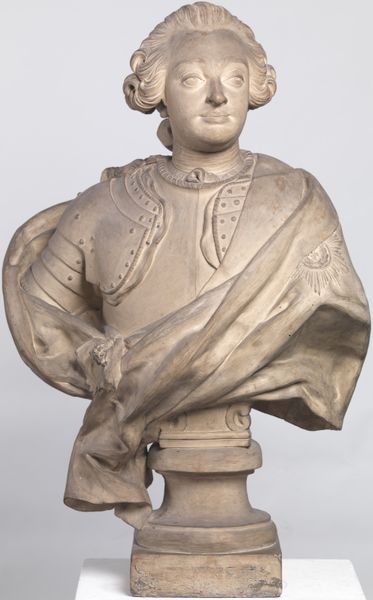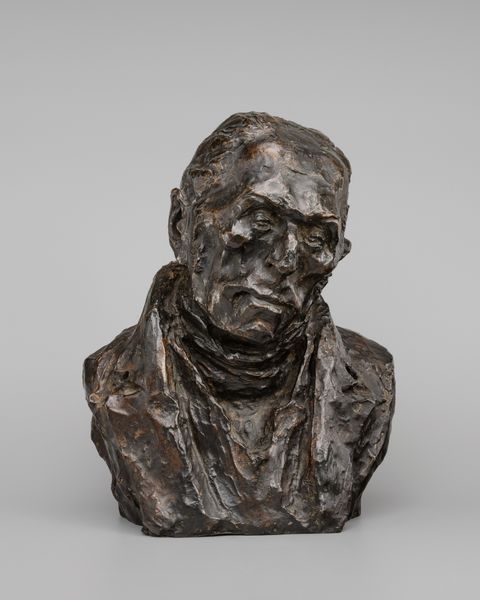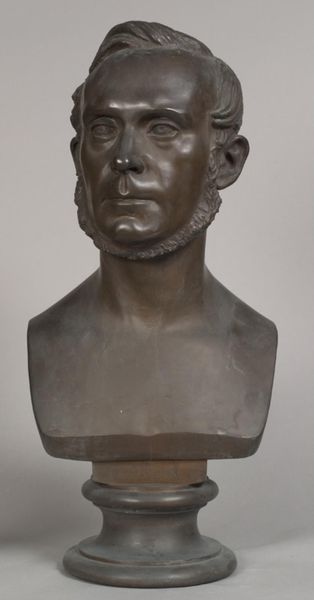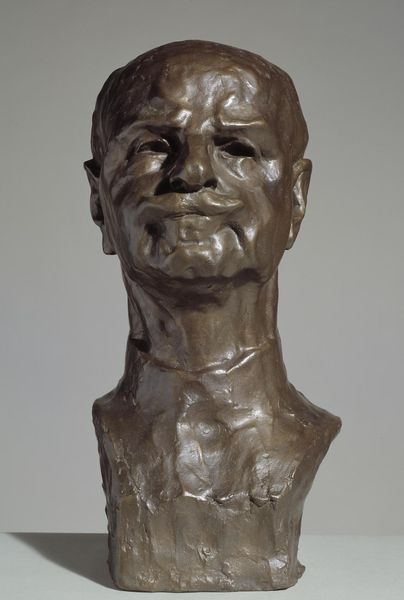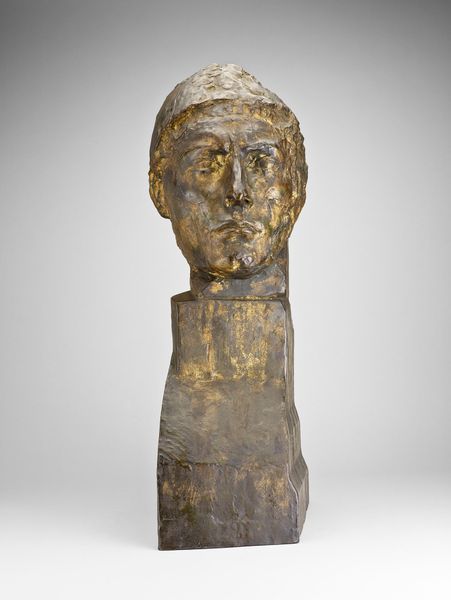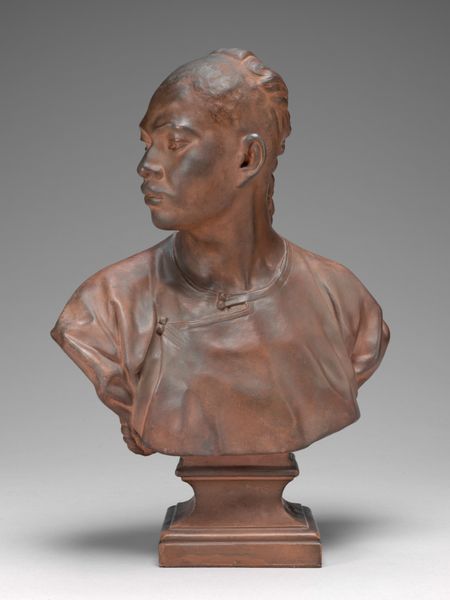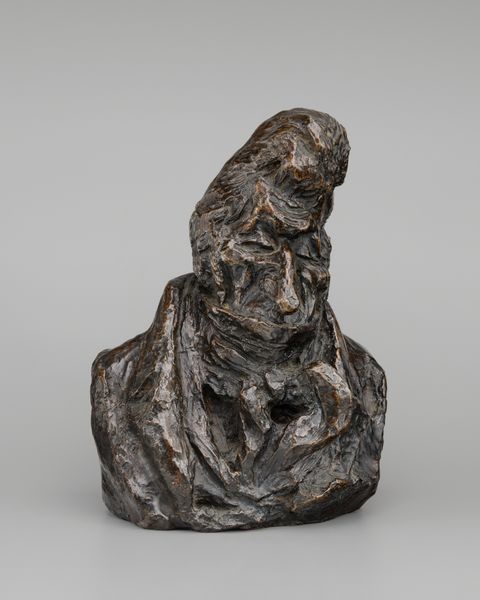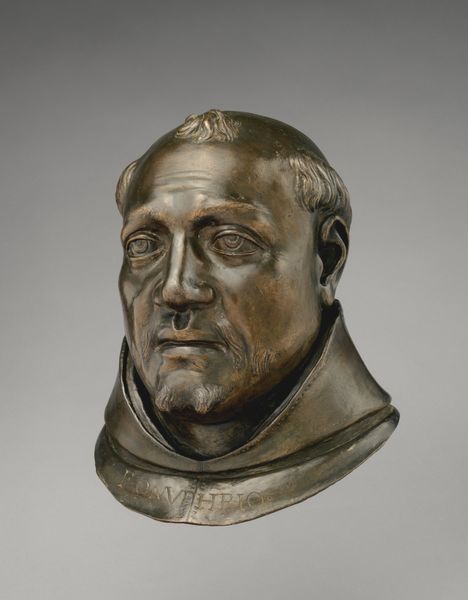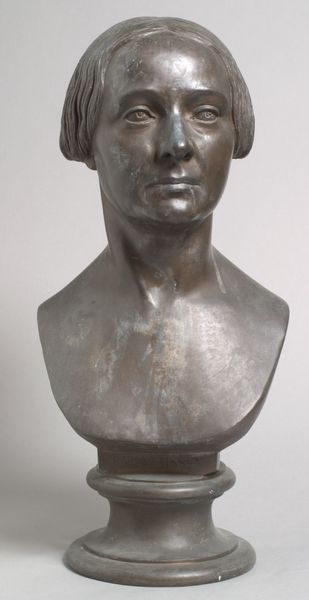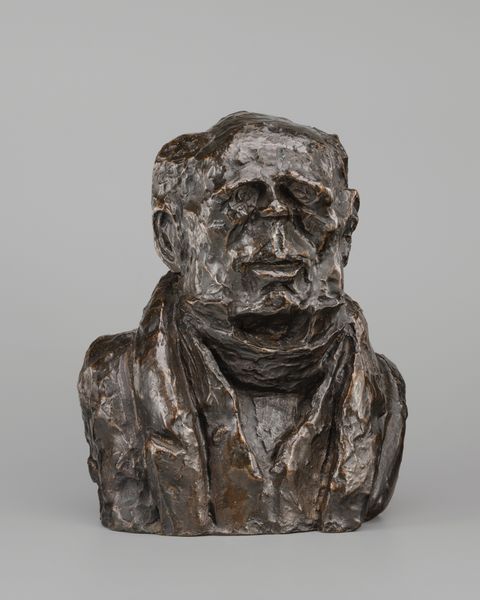
bronze, sculpture
#
portrait
#
impressionism
#
sculpture
#
bronze
#
sculpture
#
realism
Dimensions: overall: 47.6 x 58.4 x 40 cm (18 3/4 x 23 x 15 3/4 in.)
Copyright: National Gallery of Art: CC0 1.0
Curator: Let’s consider Auguste Rodin’s sculpture, "Jean d'Aire," modeled between 1884 and 1889, although this particular cast was probably made in the early 20th century. Editor: Immediately, what strikes me is the palpable weight of responsibility etched onto his face. He appears burdened, a reluctant hero maybe? Curator: Indeed. Rodin captures a profound sense of human psychology here. Note the textured surface of the bronze. Rodin deliberately left traces of his working process, the imprints of his fingers, lending an unfinished quality to the work. Editor: The texture is fantastic. It makes him feel… raw, vulnerable. Like his very skin is betraying the turmoil within. It feels impressionistic, capturing a fleeting emotional state. Curator: Precisely! Although a bronze cast, the style does take on a lot from Impressionism. “Jean d’Aire” was originally conceived as one of the Burghers of Calais. These figures capture the moment of surrender to Edward III to save their city from English forces. Jean d'Aire volunteers. Rodin depicts him prepared to go on the most dire mission imaginable. Editor: Wow, volunteer. I read that reluctance now not as simple doubt, but extraordinary resolve battling overwhelming fear. The downturned mouth, the weary eyes… you can almost feel his heart pounding. And that rope around his shoulder seems to represent all the binding forces pulling him to his duty. Curator: An excellent reading! Also notice Rodin's mastery of light and shadow, how the uneven surfaces create a play of light which draws out further emotive potential. Editor: It’s incredible how a static object can convey such profound emotion. Almost like capturing a single, frozen frame from the grand drama of life. I could stare at this forever and still not unpack everything being communicated. Curator: I agree. Rodin’s sculptural explorations push us beyond the mimetic. He delves into psychological terrain. Editor: Ultimately, this isn't just a portrait of a man. It's a mirror reflecting our own vulnerabilities and potential for extraordinary courage. Thank you, Jean d'Aire and Auguste Rodin, for holding that mirror up for us.
Comments
No comments
Be the first to comment and join the conversation on the ultimate creative platform.
